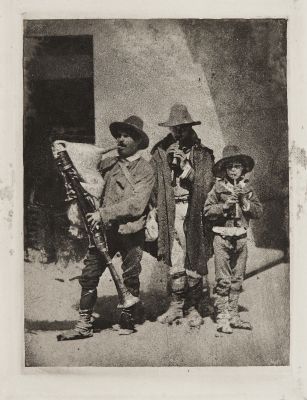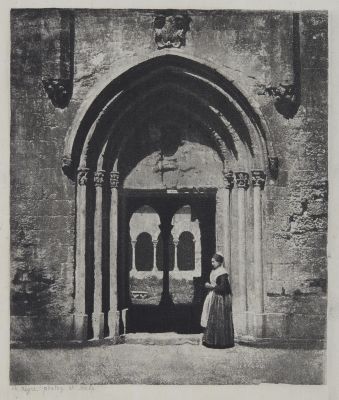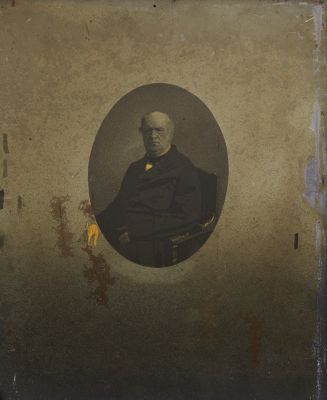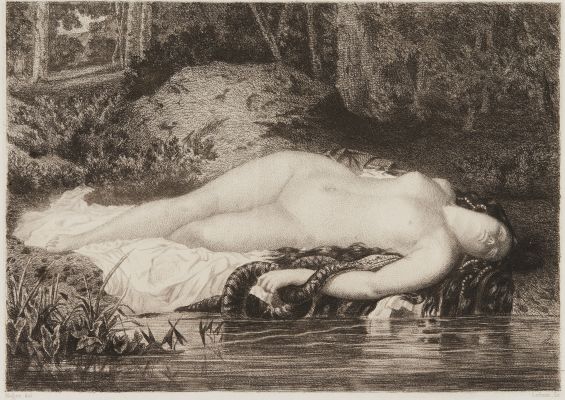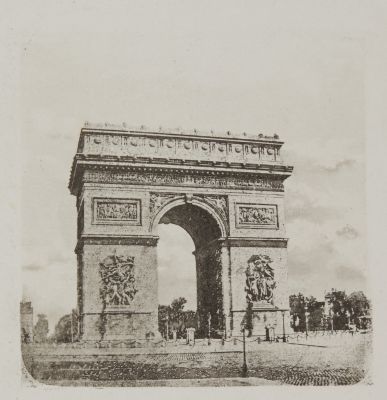
Title
Pifferari Jouant de Leurs Instruments au 21 Quai BourbonArtist
Nègre, Charles (French, 1820-1880)Key FigureDate
1854Process
Photogravure (heliogravure)Atelier
Charles NègreImage Size
11 x 14.5 cm
Charles Nègre was encouraged to take up photography as a study-tool by his painting teacher, Paul Delaroche. After a short period of experimenting with daguerreotypes, he started using the paper negative process (calotype) in 1847. Nègre’s experience at the easel was the foundation for his photographic work of the early 1850s–genre scenes of Parisian street musicians, chimney sweeps, and vendors, as well as architectural views. Like many others who were dissatisfied with the changing appearance of salt or albumen prints as they faded, Nègre actively pursued an alternative printing method that could combine subtlety of tone with permanence. He studied photogravure with Niépce de St. Victor, taking out a patent on his own method in 1856. Setting him apart from his contemporaries, Nègre achieved control of all aspects of production from the exposing of negatives to the pulling of proofs.
For an artist like Nègre, photogravure’s similarities to traditional etching constituted an invitation to put it to artistic use. As a print-maker, he exploited ink’s potential as an integral part of both the meaning and the beauty of the image. In Nègre’s three musicians he was able to translate by photography and photogravure print, as he would on canvas, a complete artistic thought… “It is not simply a cold reproduction of three figures posed by chance: it is a planned picture, with its purposes and its lessons” Ernest Lacan. [1]
Artists, photo-historians, and photo-theorists alike view Nègre’s photographs of musicians and workers as uncritical, preliminary steps toward street photography as a traditional, convention-bound genre. [2]
Reproduced / Exhibited
Marien, Mary W. Photography and Its Critics: A Cultural History, 1839-1900. Cambridge: Cambridge University Press, 2011
Borcoman, James. Charles Negre. Ottawa: Galerie nationale du Canada, 1976. Fig. 132.
La Photographie III Collection Marie-Thérese et André Jammes Paris 22 March 2002 Lot 580
W. Bokelberg, 1989, no. 34
Marbot B Bibliothèque nationale (France) Musée du Petit Palais (Paris France) Metropolitan Museum of Art (New York N.Y.). After Daguerre : Masterworks of French Photography (1848-1900) from the Bibliothèque Nationale. New York: Metropolitan Museum of Art in association with Berger-Levrault Paris; 1980
MFA Boston accession number 2003.112
References
[1] Marbot B Bibliothèque nationale (France) Musée du Petit Palais (Paris France) Metropolitan Museum of Art (New York N.Y.). After Daguerre : Masterworks of French Photography (1848-1900) from the Bibliothèque Nationale. New York: Metropolitan Museum of Art in association with Berger-Levrault Paris; 1980
[2] For examples of this viewpoint, see Colin Westerbeck and Joel Meyerowitz, Bystander: A History of Street Photography (Boston: Little, Brown, 1994), Clive Scott, Street Photography: From Atget to Cartier-Bresson (London and New York: I.B. Tauris, 2007), and Ute Eskildsen, ed. Street and Studio: An Urban History of Photography , exh. cat. (London: Tate Publications, 2008).
Borcoman, James, and Charles Nègre. Charles Nègre. Ottawa: National Gallery of Canada for the National Museums of Canada, 1976.
La Lumière: Revue De La Photographie: Beaux-Arts, Heliographie, Sciences. Paris, 1851.
Lewis, Jacob W. Charles Nègre in Pursuit of the Photographic, 2012.
Photography in Print : From the Photogravure to the Photobook, Bernard Quaritch ltd, Catalogue 1394.

